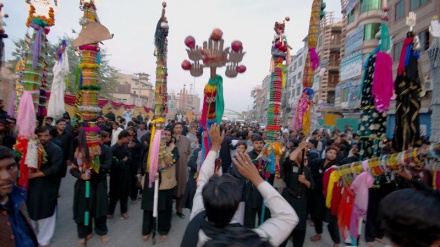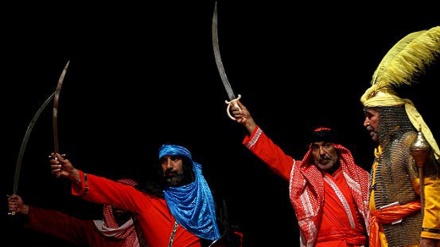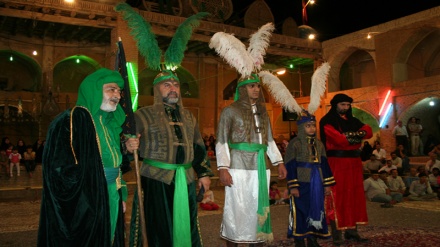Muharram mourning traditions in different lands - 26
Welcome to the 26th part of the 40-plus episodes of a new and interesting series titled “Muharram Mourning Traditions in Different Lands” that we started broadcasting as of October 15 on a daily basis, to commemorate the heartrending tragedy of Karbala, and the martyrdom of Imam Husain (PBUH), the grandson of Prophet Mohammad (Blessings of God upon him and his progeny).
In this series, which delves into the various mourning traditions associated with the Immortal Epic of Ashura in various lands, we look at the history of mourning for Imam Husain (PBUH) in other parts of the African continent, following our yesterday’s discourse on such ceremonies in Algeria.
The overwhelming majority of the population of Morocco is Muslim, and in the early centuries of Islamic history, the region was the base for Sh’ia Muslims, following the establishment of the Idrisid dynasty in the 9th century AD, by Idris, the great grandson of the Prophet’s elder grandson Imam Hasan Mojtaba (AS). As we said yesterday, he had come to this region in the aftermath of the tragedy of Fakh near Mecca in 145 AH, when many male members of the Prophet’s descendants were slaughtered by the usurper Abbasid regime. It is interesting to note that after some two centuries of Idrisid rule, many of the dynasties that cropped up claimed descent from the Prophet. Even the present dynasty of Morocco claims to be descendants of the Prophet, but unlike the Idrisids and the Fatemids, who were Shi’ite Muslims, it follows the Sunni Malekite School of jurisprudence, and under the influence of the Wahhabi Saudi regime, has adopted a hostile policy against the followers of the Ahl al-Bayt. Nonetheless, Shi’a Muslims in Morocco are rapidly growing and are believed to be hundreds of thousands. They hold the mourning ceremonies of Muharram in closed doors and do not come out on the streets. After the victory of the Islamic Revolution in Iran, Ayatollah Seyyed Kazem Qazvini traveled to Morocco and helped promote understanding between Shi’a and Sunni Muslims.
In the Republic of Sierra Leone in West Africa, Muslims were not aware of Ashura and Muharram until the Islamic Republic of Iran established its embassy and made the people aware of the facts about the School of the Ahl al-Bayt, by holding seminars and publishing articles. Many people became familiar with the culture of mourning, and today Shi’a Muslims are active in Sierra Leone and other states of West Africa. In Senegal, 95 percent of the population is Muslims and consist of many of Shi’as, because of the influence of Sufi orders such as Tijaniya and Qaderiya. A remarkable percent of the Senegal population has trade ties with Lebanese, and because of this many people have become Shi’a Muslim. They conduct the mourning ceremonies in the local language called “Wolof”.
In East Africa, Tanzania, which embraced Islam as early as 72 AH, Shi’a Muslims have a long history, because of migration of Arab and Iranian merchants, especially from Shiraz, who several centuries ago ruled part of the area. Tanzania has established 14 houses of mourning in the name of 14 infallibles and the most famous one is called “al-Maatam” (or grief). The people arrange Nazris for feeding the poor and continue the mourning ceremonies till Arba’een, or the 40th day after the tragedy of Ashura.
In neighbouring Kenya, in the first ten days of Muharram, Shi’a Muslims come to the streets dressed in black, and with a mourning march in coordination with the police. Then they spread the message of Imam Husain in English and Swahili for those who are not aware of the tragedy of Karbala. The mourning ceremonies are mostly in Swahili language.
In Somalia and Burundi, Shi’a Muslims came over a millennium ago, as a result of the migration of Shirazis from Iran in the third century AH. In the last century, businessmen from the subcontinent increased their contacts, and as a result the mourning ceremonies of Muharram are held to this day.
MD/AS/ME


